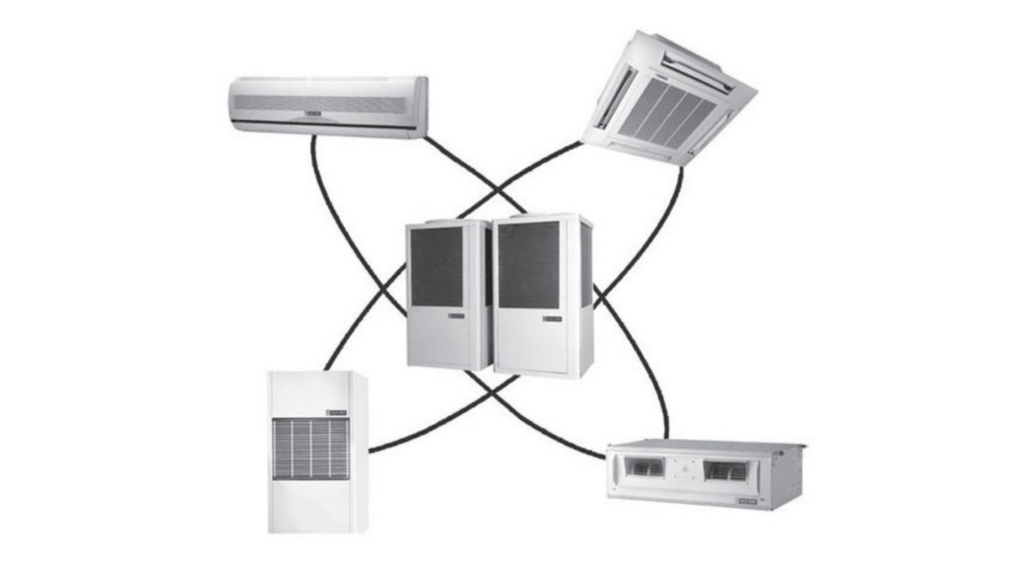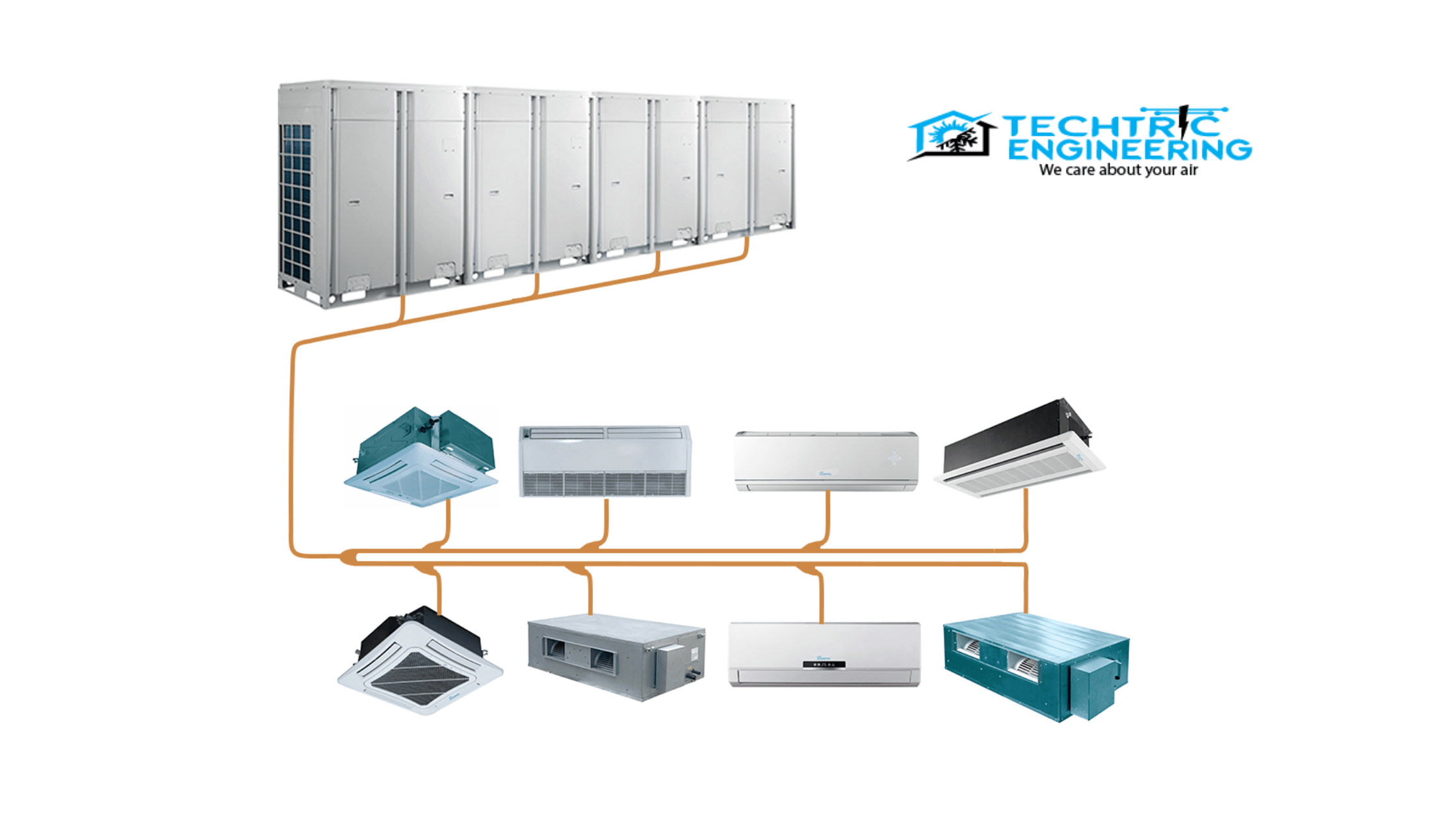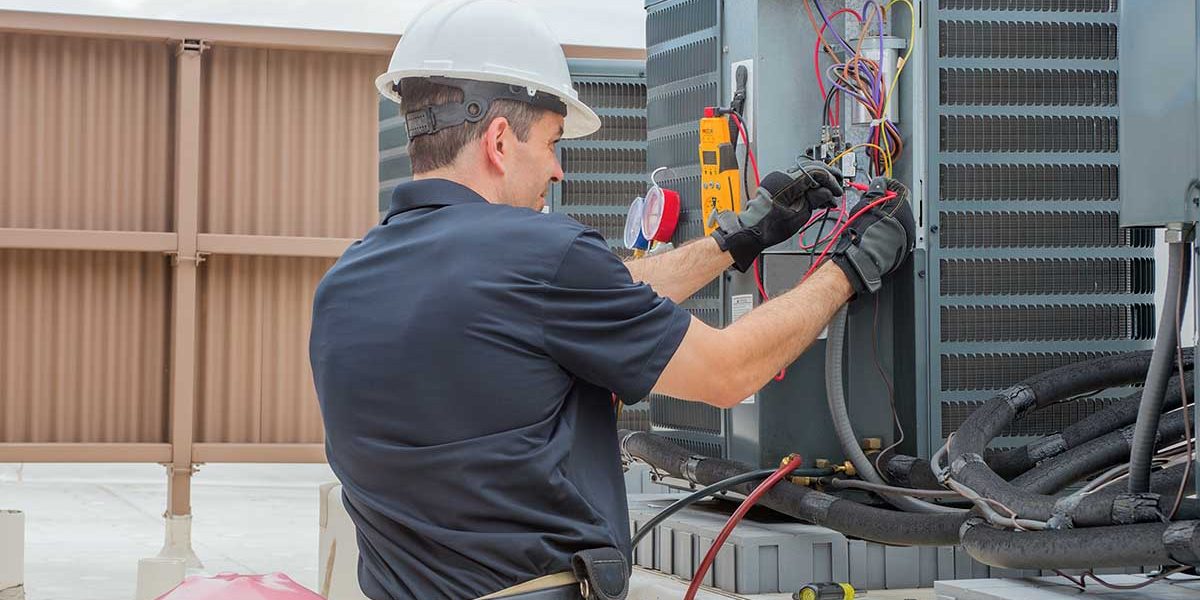You’re probably familiar with the terms furnaces, boilers, heat pumps, and air conditioners, at least you’ve heard of them. A variable refrigerant flow system is something completely foreign to most, but your building could be missing out. These are powerful, effective, customizable, and energy-efficient heating and cooling systems that can offer a quick return on investment. If you’re interested in learning more about VRF System technology and how you can benefit from it, then continue reading this blog.
What are VRF systems?
The simplest explanation of VRF is to describe it as a large-scale ductless HVAC system that can perform at a high capacity. The specific design of a VRF system varies based on application. In general, VRF technology provides the ability for multiple indoor units or zones to operate on the same system.
Variable refrigerant flow (VRF), also known as variable refrigerant volume (VRV), is an HVAC technology invented by Daikin Industries, Ltd. in 1982. Like ductless minisplits, VRFs use refrigerant as the cooling and heating medium. This refrigerant is conditioned by a single or multiple condensing units (which may be outdoors or indoors, water or air cooled), and is circulated within the building to multiple indoor units. VRF systems, unlike conventional chiller-based systems, allow for varying degrees of cooling in only certain areas, reducing energy consumption.
VRFs are typically installed with an air conditioner inverter which adds a DC inverter to the compressor in order to support variable motor speed and thus variable refrigerant flow rather than simply perform on/off operation. By operating at varying speeds, VRF units work only at the needed rate allowing for substantial energy savings at load conditions. Heat recovery VRF technology allows individual indoor units to heat or cool as required, while the compressor load benefits from the internal heat recovery. Energy savings of up to 55% are predicted over comparable unitary equipment. This also results in greater control of the building’s interior temperature by the building’s occupants.
VRFs come in two system formats, two pipe and three pipe systems. In a heat pump two pipe system all of the zones must either be all in cooling or all in heating. Heat Recovery (HR) systems have the ability to simultaneously heat certain zones while cooling others; this is usually done through a three pipe design, with the exception of Mitsubishi and Carrier, whose systems are able to do this with a two pipe system using a branch circuit (BC) controller to the individual indoor evaporator zones. In this case the heat extracted from zones requiring cooling is put to use in the zones requiring heating. This is made possible because the heating unit is functioning as a condenser, providing sub-cooled liquid back into the line that is being used for cooling. While the heat recovery system has a greater initial cost, it allows for better zoned thermal control of a building and overall greater efficiencies. In heat recovery VRF systems, some of the indoor units may be in cooling mode while others are in heating mode, reducing energy consumption. If the coefficient of performance in cooling mode of a system is 3, and the coefficient of performance in heating mode is 4, then heat recovery performance can reach more than 7. While it is unlikely that this balance of cooling and heating demand will happen often throughout the year, energy efficiency can be greatly improved when the scenario occurs.
VRF systems may be air or water cooled. If air cooled, VRF condensing units are exposed to outside air and may be outdoors, and condensing units are the size of large refrigerators, since they need to contain a large condenser (heat exchanger) to transfer heat to the surrounding air, because air doesn’t have a high heat capacity. If water cooled, the condensing units are placed indoors and are much smaller and cooled, using water, possibly by a cooling tower.
How does a VRF system work?
VRF systems use heat pumps or heat recovery systems to provide powerful heating and cooling for all indoor and outdoor units without the use of air ducts. With a VRF system, your building will have multiple indoor units utilized by a single outdoor condensing unit, either with a heat pump or heat recovery system.
The technology behind VRF systems is incredibly complex but think of them as an enhanced version of ductless mini-splits. VRF systems use heat pumps or heat recovery systems to provide powerful heating and cooling for all indoor and outdoor units without the use of air ducts.

With a VRF system, your building will have multiple indoor units utilized by a single outdoor condensing unit, either with a heat pump or heat recovery system. The main difference between the two is that the latter can provide simultaneous heating and cooling. The outdoor unit has compressors with inverter-driven fans, which means their speed varies by adjusting the frequency of the power supply. The amount of refrigerant delivered by the compressor is dependent on the rate. When the indoor unit sends a demand to the outdoor unit, the outdoor unit delivers the specific amount of refrigerant to the individual indoor units. VRF technology can perform at a high capacity without the use of ducts, which is one of its many advantages.
Advantages of a VRF system:
-
Customized heating and cooling – In conventional HVAC systems, you’ll find that the only options are on or off. VRF systems can heat and cool different zones within a building simultaneously and occupants can customize the temperature settings.
-
Flexible design – The product comes in a multitude of types and sizes, which means it can fit any application. You can find sleek and compact equipment, so if you have limited space, this could be an excellent choice.
-
Runs at a low volume – VRF systems are very quiet and won’t disturb building occupants when it’s running, unlike older HVAC technology.
-
Easy installation – Since the units are generally compact and weigh less than equipment with ducts, installation is a breeze! You won’t need to call in the big cranes for rooftop placements either since most can fit in service elevators. We know that this is especially important for businesses that need to resume normal operations quickly.
-
Energy-efficient – These systems are up to 30% more efficient than conventional HVAC systems. They provide energy savings by the varied compressor speed and only delivering the required temperature. Additionally, you won’t experience energy loss through ductwork since it doesn’t require any.
What is difference between VRV and VRF?
VRV stands for “Variable Refrigerant Volume,” while VRF stands for “Variable Refrigerant Flow”. VRF refers to the same basic technology used in those systems manufactured by other companies—Fujitsu, for one, makes some great variable refrigerant flow systems.
What is a 3 pipe VRF system?
Heat Recovery VRF Systems, also known as 3-pipe VRF, allow heating and cooling in all indoor terminal devices simultaneously. Each indoor heat recovery unit works together with the indoor terminal units and respective thermostats in each zone to determine if they require heating or cooling.



